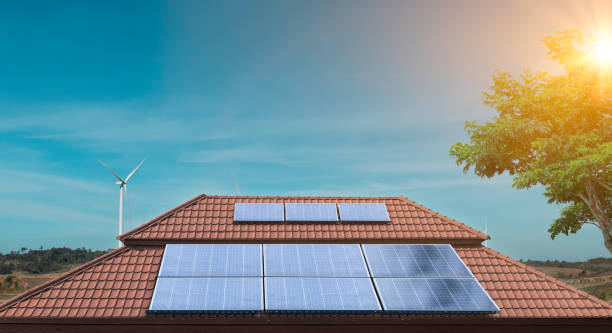อาชีพแม่บ้านทำความสะอาด เป็นโอกาสหรือความเสี่ยงในยุคนี้
อาชีพแม่บ้านทำความสะอาดเป็นอาชีพที่มีความสำคัญและจำเป็นในสังคมทุกยุคทุกสมัย เพราะเป็นอาชีพที่คอยดูแลความสะอาดของสถานที่ต่างๆ ไม่ว่าจะเป็นบ้านพักอาศัย อาคารสำนักงาน สถานประกอบการ หรือแม้แต่สถานที่สาธารณะต่างๆ อาชีพแม่บ้านทำความสะอาดจึงมีแนวโน้มที่จะเติบโตและขยายตัวอย่างต่อเนื่องในอนาคต โอกาสของอาชีพแม่บ้านทำความสะอาดในยุคนี้ ในยุคปัจจุบัน สังคมมีการเปลี่ยนแปลงไปอย่างรวดเร็ว ผู้คนมีวิถีชีวิตที่เร่งรีบและให้ความสำคัญกับเวลามากขึ้น ส่งผลให้ความต้องการใช้บริการทำความสะอาดจากแม่บ้านเพิ่มขึ้นเรื่อย ๆ ประกอบกับเทคโนโลยีและนวัตกรรมใหม่ๆ เข้ามามีบทบาทในชีวิตประจำวันมากขึ้น ทำให้ผู้คนหันมาใช้บริการทำความสะอาดจากแม่บ้านมืออาชีพมากขึ้น เนื่องจากต้องการความสะดวกรวดเร็วและมั่นใจในคุณภาพของงาน นอกจากนี้ แนวโน้มการเข้าสู่สังคมผู้สูงอายุที่เพิ่มขึ้นก็เป็นปัจจัยหนึ่งที่ส่งผลต่อโอกาสของอาชีพแม่บ้านทำความสะอาด เนื่องจากผู้สูงอายุอาจไม่สะดวกหรือมีเวลาทำความสะอาดบ้านด้วยตัวเอง จึงต้องการใช้บริการจากแม่บ้านทำความสะอาด ความเสี่ยงของอาชีพแม่บ้านทำความสะอาดในยุคนี้ แม้ว่าอาชีพแม่บ้านทำความสะอาดจะมีแนวโน้มที่จะเติบโตและขยายตัวอย่างต่อเนื่อง แต่ก็มีความเสี่ยงบางประการที่แม่บ้านทำความสะอาดควรตระหนักและเตรียมพร้อมรับมือ ความเสี่ยงประการแรกคือ…
เลือกเรียนภาษาอังกฤษตัวต่อตัวอย่างไรดี
การเรียนภาษาอังกฤษ ถือเป็นสิ่งที่ทุกคนต่างต้องการ ไม่ใช่แค่เฉพาะนักเรียนนักศึกษาอย่างเดียวเท่านั้น หากแต่ผู้ที่อยู่ในวัยทำงานเองก็ต้องการฝึกทักษะการเรียนภาษาอังกฤษเช่นกัน อย่างไรก็ดีหากว่าคุณเป็นอีกคนหนึ่งที่อยากเรียนภาษาอังกฤษตัวต่อตัว มีวิธีเลือกอย่างไรบ้าง มาดูพร้อมๆ กันเลย 1.เลือกแบบที่ผู้เรียนเลือกเนื้อหาได้เอง การเลือกเนื้อหาสำหรับเรียนได้ด้วยตัวเอง ถือเป็นสิ่งสำคัญที่ผู้เรียนหลายคนอาจจะยังไม่รู้มาก่อน และคิดว่าจะเลือกเนื้อหาอย่างไรก็เหมือนๆ กัน แต่ในความเป็นจริงแล้วนั้นการเลือกเนื้อหาที่จะเรียนได้เอง สามารถช่วยให้คุณเรียนรู้ภาษาอังกฤษได้ตรงตามจุดประสงค์ของการเรียนภาษา อีกทั้งยังตอบสนองพื้นฐานการเรียนภาษาที่แตกต่างกันได้ เพราะบางคนอาจมีพื้นฐานที่ดีมาก่อนหน้านี้แล้ว บางคนมีพื้นฐานอ่อน หากเลือกเนื้อหาได้เองก็จะช่วยทำให้คุณมีความมั่นใจและอยากเรียนรู้เพิ่มเติมไปอีก 2.เลือกแบบที่เห็นผลเร็ว ไม่ว่าใครต่างก็อยากเรียนภาษาอังกฤษแบบเห็นผลเร็วด้วยกันทั้งสิ้น เพราะต่างคนต่างก็ต้องการพัฒนาความสามารถของตนเองให้ได้มากที่สุดในทุกๆ ด้าน แต่การเลือกลงเรียนแบบที่เห็นผลเร็วนั้น คุณจะต้องพิจารณาดูด้วยว่าทางโรงเรียนมีคอร์สแบบใด…
พอต Argus Pro 80w ตอบโจทย์การใช้งานได้ดีที่สุด
หากพูดถึงพอตไฟฟ้า จะต้องยอมรับเลยว่าในปัจจุบันกำลังเป็นที่นิยมอย่างมาก ซึ่งจะได้รับความนิยมทั้งในหมู่ของนักสูบทั่ว ๆ ไป และนักสูบหน้าใหม่ที่เพิ่งเข้าสู่วงการ โดยพอตไฟฟ้าในปัจจุบันนั้น จะมีให้เลือกใช้งานอย่างมากมาย แถมยังมีการพัฒนาพอตไฟฟ้ารูปแบบใหม่ ๆ ออกมาอยู่เสมอ เพื่อต้องการให้ทุกคนเลือกใช้งานกันอย่างจุใจ ตอบโจทย์การใช้งานได้ดีที่สุด ซึ่งพอตไฟฟ้า Argus Pro 80W จะเป็นอีกหนึ่งรุ่นที่ทุกคนไม่ควรมองข้ามเลยทีเดียว พอตไฟฟ้า Argus Pro 80W รุ่นยอดนิยมที่ทุกคนไม่ควรมองข้าม สำหรับพอตไฟฟ้า Argus…
นายทุนขายฝากทั่วประเทศ เลือกนายทุนอย่างไรให้ปลอดภัยมากที่สุด
ในวงการอสังหาริมทรัพย์หลายคนอาจจะคุ้นเคยกับคำว่าจำนองเป็นส่วนใหญ่ เนื่องจากจะเป็นการทำธุรกรรมที่ได้รับความนิยมกันมาอย่างยาวนาน แต่ในปัจจุบันการทำธุรกรรมเกี่ยวกับบ้านหรือที่ดินนั้น จะไม่ได้มีเพียงการจำนองอย่างเดียวเท่านั้น แต่จะมีการ “ขายฝาก” เพิ่มเข้ามา เพื่อเป็นทางเลือกให้แก่ทุก ๆ คน แถมในปัจจุบันยังมีนายทุนขายฝากทั่วประเทศให้เลือกขายฝากที่ดินอยู่มากมาย เพื่อตอบโจทย์ให้แก่การซื้อขายทรัพย์สินต่าง ๆ ได้ดีที่สุด นายทุนขายฝากทั่วประเทศ คืออไร? เชื่อได้เลยว่าหลาย ๆ คนจะต้องสงสัยกันอย่างแน่นอนว่า นายทุนขายฝากทั่วประเทศคือใคร? และเราสามารถหานายทุนเหล่านี้ได้จากที่ไหน ซึ่งนายทุนหรือนักลงทุนซื้อฝากนั้น จะหมายถึงผู้ที่ต้องการลงทุนในอสังหาริมทรัพย์ โดยการทำสัญญาซื้อขายที่กรรมสิทธิ์ในทรัพย์สิน ไม่ว่าจะเป็น…
เลือกซื้อ ประกันชั้น 2
เมื่อพูดถึงรูปแบบประกันรถยนต์ในปัจจุบันต้องยอมรับว่ามีความหลากหลายและมีความน่าสนใจมากในแต่ละรูปแบบของประกันรถยนต์ก็ให้ความคุ้มครองที่ไม่เหมือนกันโดยราคาเบี้ยประกันแต่ละประเภทนั้นต่างกันตามความคุ้มครองที่มากหรือน้อยของแต่ละรูปแบบประกันสำหรับวันนี้รูปแบบประกันที่เราอยากจะแนะนำให้คุณได้เลือกซื้อคือประกันชั้น 2 สำหรับใครที่ยังลังเลอยู่ว่าจะเลือกซื้อรูปแบบประกันรถยนต์ประเภทไหนดีลองเข้ามาทำความรู้จักกับประกันชั้น 2 ที่เราแนะนำต่อไปนี้มั่นใจได้เลยว่ามันจะเป็นอีกหนึ่งตัวเลือกดีๆที่จะทำให้คุณได้รับความคุ้มครองที่ดีที่สุดในราคาเบี้ยประกันที่ถูกที่สุดเมื่อเข้ามาซื้อกับเว็บไซต์ออนไลน์ เพราะเรามีบริการเปรียบเทียบราคาเบี้ยประกันชั้น 2 ที่เว็บไซต์ออนไลน์ ซึ่งจะช่วยทำให้คุณประหยัดเงินในการเลือกซื้อความคุ้มครองได้มากทีเดียว เอาเป็นว่าถ้าใครสนใจต้องการรายละเอียดเพิ่มเติมสำหรับการเลือกซื้อประกันชั้น 2 เหล่านี้ตามเราเข้ามาทำความรู้จักและเลือกซื้อรูปแบบประกันรถยนต์กันได้เลย ความคุ้มครอง จาก ประกันชั้น 2 ในส่วนของช่องทางการเลือกซื้อประกันชั้น 2 ได้นอนว่าคุณสามารถเข้ามาเลือกซื้อที่เว็บไซต์ออนไลน์ได้เรามีหลากหลายรูปแบบประกันให้คุณได้เลือกซื้อไม่ใช่แค่เพียงประกันชั้น 2 เท่านั้นประกันชั้น 1 ประกันชั้น 2 พลัสประกันชั้น…
หอมกว่านี้ไม่มีอีกแล้ว กับน้ำยาบุหรี่ไฟฟ้าองุ่นยาวsalt 2 แบบ 2 แนว แต่ฮิตพอกัน
บทความนี้เราจะมาแชร์สิ่งของที่หอมกว่านี้ไม่มีอีกแล้ว กับน้ำยาบุหรี่ไฟฟ้าองุ่นยาวsalt 2 แบบ 2 แนว แต่ฮิตพอกันกัน ซึ่งสิ่งของที่หอมกว่านี้ไม่มีอีกแล้ว กับน้ำยาบุหรี่ไฟฟ้าองุ่นยาวsalt 2 แบบ 2 แนว แต่ฮิตพอกันที่เรานำมาฝากกันในบทความนี้จะมีอะไรบ้างนั้น เพื่อนๆ ต้องตามมาดูพร้อมๆ กันที่ด้านล่างของบทความนี้กันเลย หอมกว่านี้ไม่มีอีกแล้ว กับน้ำยาบุหรี่ไฟฟ้าองุ่นยาวsalt 2 แบบ 2 แนว แต่ฮิตพอกัน แบบที่…
เชื้อรามาจาก 3 ปัจจัยสำคัญ กำจัดเชื้อราด้วยเครื่องปรับความชื้น ดีกว่าไหม
เมื่ออากาศมีความชื้นสะสมมากๆ ปัญหาที่ตามมาแน่ๆ คือเรื่องของเชื้อรา โดยเฉพาะหลังน้ำท่วมบ้านของเรามีโอกาสเกิดเชื้อราสูง คำถามคือเชื้อรามาจากไหนเกิดขึ้นได้อย่างไร นอกจากความชื้นแล้วยังมีปัจจัยอื่นๆ ด้วย วันนี้เราจะพามาหาคำตอบ รวมไปถึงการใช้เครื่องปรับความชื้น หลายคนสงสัยว่าช่วยกำจัดเชื้อราหรือป้องกันการเกิดเชื้อราได้จริงหรือไม่ ไปดูกัน 3 ปัจจัยที่ทำให้เกิดเชื้อราและกระตุ้นให้เจริญเติบโต 1.อุณหภูมิ อุณหภูมิเป็นตัวเร่งทำให้เชื้อราเจริญเติบโตได้ดี รู้หรือไม่ว่าเชื้อราแต่ละชนิดนั้นเจริญเติบโตได้ดีในช่วงอุณหภูมิที่แตกต่างกันออกไป อุณหภูมิที่เหมาะสมในการเกิดเชื้อราอยู่ที่ประมาณ 15-30 องศาเซลเซียส 2.อาหารของเชื้อรา อาหารของเชื้อราได้แก่ฝุ่นละออง วัสดุก่อสร้างโดยเฉพาะฝุ่นเป็นที่อยู่ของเชื้อราและเมื่อมีความชื้นสูงเชื้อราก็จะเจริญเติบโตได้เร็วมากๆ เป็นปัญหาทำให้ห้องมีกลิ่นอับหรือกลิ่นไม่พึงประสงค์ แม้แต่วัสดุที่ไม่ดูดซับน้ำอย่างพวกพลาสติกหรือกระจกก็ยังเกิดเชื้อราที่ผิววัสดุได้ 3.ความชื้นหรือน้ำ…
ประกันรถยนต์ชั้น 2 ดีอย่างไร
ในรูปแบบความคุ้มครองประกันรถยนต์ปัจจุบันนี้มีหลากหลายรูปแบบประกันให้คุณได้เลือกซื้อและแต่ละประกันก็ให้ความคุ้มครองที่น่าสนใจขึ้นอยู่กับความชื่นชอบของผู้เอาประกันเองว่าอยากได้รูปแบบความคุ้มครองแบบไหนซึ่งในวันนี้สำหรับใครที่อยากจะซื้อประกันรถยนต์ชั้น 2 เรามีข้อดีของรูปแบบประกันรถยนต์ชั้น 2 มาแนะนำให้คุณด้วยรู้เผื่อว่ามันจะช่วยทำให้คุณตัดสินใจเลือกซื้อรูปแบบความคุ้มครองประกันรถยนต์ได้ง่ายมากขึ้นแถมคุณได้รับสิทธิพิเศษอีกมากมายจากการเข้ามาเลือกซื้อประกันรถยนต์ชั้น 2 กับเว็บรู้ใจของเราเอาเป็นว่าถ้าใครที่กำลังมองหาความคุ้มครองของประกันรถยนต์ชั้น 2 อยู่แล้วก็ตามเรามาดูข้อดีของการเลือกซื้อรูปแบบประกันรถยนต์นี้กันก่อนได้เลย เหตุผลที่ต้องซื้อประกันรถยนต์ชั้น 2 อย่างที่ทราบกันดีว่าประกันรถยนต์ในปัจจุบันนี้มีหลากหลายรูปแบบให้คุณเลือกซื้อและหนึ่งในนั้นก็คือประกันรถยนต์ชั้น 2 ซึ่งเป็นประกันรถยนต์ที่ให้ความคุ้มครองค่อนข้างครอบคลุมรองลงมาจากประกันชั้นหนึ่ง ซึ่งหลายๆคนอาจจะยังไม่มั่นใจว่าทำไมจะต้องเลือกซื้อรูปแบบประกันรถยนต์ชั้น 2 นี้ด้วยวันนี้เราจะมีข้อดีของรูปแบบประกันรถยนต์ชั้น 2 มาแนะนำให้คุณได้รู้เผื่อว่ามันจะช่วยทำให้คุณตัดสินใจเลือกซื้อประกันรถยนต์รูปแบบนี้ได้ง่ายมากขึ้น ราคาเบี้ยประกันของประกันรถยนต์ชั้น 2 มีราคาที่ถูกกว่ารูปแบบประกันรถยนต์ชั้น 1 มากหากคุณมีรายได้น้อยไม่เพียงพอที่จะซื้อประกันรถยนต์ชั้น 1…
อยากซื้อประกันรถยนต์ ต้องดูอะไรบ้าง
การมีรถยนต์เป็นของตนเองจะมีความเสี่ยงต้องพบเจอในชีวิตประจำวันที่อาจเกิดขึ้นกับรถยนต์ของเรา เช่น อุบัติเหตุทางถนน การเกิดภัยคุกคามจากสภาพแวดล้อม เช่น พายุหรือน้ำท่วม และปัญหาเรื่องสุขภาพของรถ เพื่อรองรับความเสี่ยงเหล่านี้ การซื้อประกันรถยนต์กลับกลายเป็นหนึ่งตัวช่วยที่ที่สำคัญที่ไม่ควรมองข้าม การซื้อประกันรถยนต์ควรพิจารณาอย่างรอบคอบ ไม่เพียงแต่เพื่อปกป้องรถยนต์ของคุณเอง แต่ยังเพื่อความเชื่อมั่นในการดำเนินชีวิตประจำวันด้วยความมั่นใจ และเหตุผลที่ควรพิจารณาก่อนที่คุณจะตัดสินใจซื้อประกันรถยนต์ มีดังนี้ ประเภทของประกันรถยนต์: มีหลายประเภทของประกันรถยนต์ คุณควรพิจารณาตามความต้องการและสภาพรถของคุณ หากคุณต้องการความครอบคลุมที่มากที่สุดและพร้อมจ่ายเบี้ยประกันที่สูง คุณอาจเลือกประกันชั้น 1เป็นประกันที่ครอบคลุมมากที่สุดและมักจะมีค่าเบี้ยประกันที่สูงกว่าประกันรูปแบบอื่น ๆ หรือหากคุณต้องการประกันที่คุ้มครองความเสียหายจากอุบัติเหตุบางอย่างและรับผิดชอบต่อคู่กรณี การเลือกประกันชั้น 2 ก็จะเป็นตัวเลือกที่ตอบโจทย์…
ติดโซลาร์เซลล์ ให้ประโยชน์ในการใช้งานได้มากที่สุด!
การใช้งานและการติดโซลาร์เซลล์ให้แก่บ้านของเรา ถือเป็นอีกหนึ่งตัวช่วยประหยัดค่าใช้จ่ายในด้านค่าไฟฟ้าได้เป็นอย่างดี เพราะต้องยอมรับเลยว่าในปัจจุบันโลกของเราร้อนขึ้นในทุก ๆ วัน ยิ่งเป็นฤดูร้อนด้วยแล้ว เหมือนมีดวงอาทิตย์ติดอยู่หน้าบ้านเลยทีเดียว และยิ่งเราใช้ไฟมากเท่าไหร่ ค่าไฟก็จะเพิ่มขึ้นเท่านั้น ส่งผลให้โซล่าเซลล์เป็นอีกหนึ่งตัวเลือกที่น่าสนใจเป็นอย่างมาก เพราะจะให้ประโยชน์ในการใช้งาน ที่ทุกคนคาดไม่ถึงอย่างแน่นอน ติดโซลาร์เซลล์ ใช้งานได้ง่ายที่สุด เชื่อว่าทุกคนที่ยังไม่กล้าติดโซลาร์เซลล์ เพราะกลัวว่าจะใช้งานไม่เป็น หรือใช้งานได้ยาก ซึ่งความจริงแล้วระบบโซล่าเซลล์จะเป็นระบบที่สามารถใช้งานได้ง่ายเป็นอย่างมาก เนื่องจากระบบไม่ซับซ้อน แถมยังสามารถติดตั้งได้ง่ายอีกด้วย ในปัจจุบันมีผู้รับติดตั้งโซล่าเซลล์อยู่มากมาย ที่จะใช้เวลาติดตั้งเพียงไม่นาน ก็จะช่วยประหยัดค่าใช้จ่ายในด้านค่าไฟฟ้าได้แบบยาว ๆ เลยทีเดียว…










